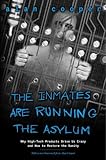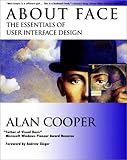The Whorf-Sapir hypothesis says that our language shapes how we think. It’s been moderately debunked in recent decades, but it’s likely true, at least in small part. And one of those small parts is when someone coins a new word that encapsulates a new idea. There has been a debate within philosophy since Plato’s time about whether words (names) – such as “circle” – correspond with some sort of actual ideal thing in some abstract realm – such as the one ideal circle of which our best drawn circles are only a pale imitation. Plato said yes, establishing the philosophical school known as Realism: “real” in this case means that there really, truly is an ideal circle somewhere out there. Nominalism says no, that “circle” is just a name, but Conceptualism, thanks to Peter Abelard, says that “circle” refers to something real, but that what’s real is about “circle” is that it’s a concept held in our brains. (If you’re a philosopher, I apologize for the gross oversimplification; but I’m a scientist, and as Bacon said: We are more likely to reach the truth through error than confusion.) And coining a new phrase can do just that – create new concepts in our brains. And that can change how we think about things.
And if all those corporate executives who are responsible for our medical software were to get one particular concept into their brains, all of us in the medical field would find our lives a lot easier and error-free.
Cognitive friction is that term, coined by Alan Cooper in The Inmates Are Running the Asylum: Why High Tech Products Drive Us Crazy and How to Restore the Sanity.

It’s quite simple. If you make a process cognitively easy, we do it rapidly and without error. If you make it cognitively hard, it takes us longer and we make mistakes.
And we know how to make things cognitively easier – how to lubricate software to reduce cognitive friction. At least, the information is out there, no matter that most medical software vendors are blissfully unaware of it. Read the rest of this entry
»







